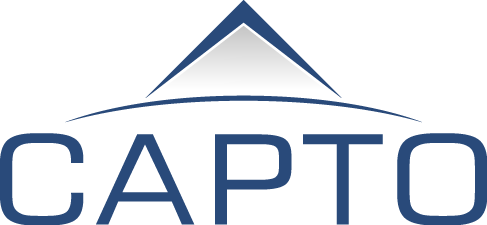Synaptic Sourcing Framework - Explained
In this post, I will step you through the SYNAPTIC sourcing framework—a disciplined, comprehensive approach for assessing a company’s ability to successfully implement a progressive, outcomes based, sourcing program for a given business or technical area and then implement the steps necessary to unlock innovation and accelerate delivery of positive results.
The SYNAPTIC framework is built on a foundation of outcomes-based sourcing principles. Everything we do here at CAPTO is premised on the belief that the focus should be on the goals, not on the transactions or mechanisms. We are also strong proponents of laying the groundwork early for measuring the outcomes to ensure our clients are getting what they truly want out of the relationship.
The framework we’ve developed is a series of five phases:
Sourcing projects start with an Readiness Assessment. That’s where we take a horizontal view of a client’s environment and analyze each major information technology (IT) or business area with respect to sourcing. One of the deliverables from the readiness assessment phase is a report showing color-coded grades for various categories along with notation regarding trends.
The assessment helps us pinpoint improvement initiatives—areas where the client should improve if they are going to embark on a sourcing program. The current staff can execute some improvement initiatives, while others are better addressed by working with the partner identified during the selection process.
eSourcing Capability Model
We use a customized version of Carnegie Mellon University’s eSCM model.
ITSqc, the spin-off Carnegie Mellon created to promote best practice models for the global IT-enabled services industry, has extended the original models to encompass service providers and client organizations.
The assessment phase can take up to three months. After which we submit and explain the report to the client, in most cases, the client agrees to move into the next phase—selection.
Selection is where we assist our clients with “harvesting the ecosystem.” We help them recognize and decide what they are good at, what capabilities they lack, and where a service provider would complement their capabilities. We then lead them through the actual selection of the provider. At CAPTO, we see ourselves as a matchmaker, not a gatekeeper.
As a last step before we move into the contracting phase, we help our clients develop a term sheet that specifies a small number of key contractual terms that the candidates must agree to before the final choice is made. In our experience we have found that the client has significantly more leverage if these critical deal terms are articulated before final selection is made and actual contract negotiations have begun.
Contracting is a fairly straight-forward and familiar process, albeit one which entails managing many details. CAPTO’s role in this phase is to track all the deal points and tie them back to the contract, making sure all the key points are included. A key tenet of our methodology is to constantly look for ways to lower the transaction costs involved with getting work done. We build in easy; straightforward contractual mechanisms to add or change work orders, lowering the transaction costs for all parties.
The transition phase is of critical importance to the success of the sourcing initiative, and it’s an area where we take a very active role by facilitating sessions with the client and partner, insuring everyone understands not only the priorities, but also the technical and business risks of the project. A focal point in this phase is knowledge transfer. Because of our extensive experience, we are able to identify and mitigate risks early on, which is crucial as both our client and the service provider drive toward the desired results.
The final phase in the sourcing framework is governance. We play a very active role in the governance phase on both the executive and operational levels. At this point, our duty shifts from advocating purely for our client’s perspective to that of a neutral arbiter, making sure the deal is implemented and governed as agreed to at the beginning of the process. In fact, CAPTO is usually paid by both parties for establishing, monitoring, and attending governance sessions.
One thing I want to emphasize is the importance of metrics. As mentioned in the opening, we at CAPTO work to ensure that the means and methods for measuring success is put into place. In our framework, we have ensured this through ongoing performance reviews. We are proactive in making timely corrections that get the program back on track if things are not moving towards the desired outcomes.
The above describes the end-to-end process which sits on top of our foundation of outcomes-based sourcing principles. In between the process and the principles is something we believe is vitally important for success of sourcing projects: mechanisms for organizational change management (OCM) and sourcing process management. It is not enough simply to have good ideas based on solid principles, the methods and techniques of how one executes and manages sourcing projects are just as critical to success. With our extensive experience in dozens of engagements, we bring to our clients the knowledge of what techniques work and where.
You can see from the above there is immense breadth and depth to the CAPTO SYNAPTIC sourcing framework. We have created a unique and functional way to ensure the success of sourcing relationships. So far, our clients have been amazed at the results.
If you are considering a sourcing initiative, we’d be happy to sit down with you to talk through the approach in the context of your project. Reach out here.

